Growing up, I always knew the Beagle was one of the most popular dogs in the world. In fact, it’s the #6 most popular dog in the United States. But it wasn’t until later that I discovered the smaller, equally adorable Beagle called the Pocket Beagle.
These little guys are just two to three inches shorter than a typical Beagle, but they pack in all the curiosity, intelligence, and fun-loving spirit you’d expect from a Beagle.
I remember reading about how these tiny scent hounds were first discovered in the 15th Century. Queen Elizabeth loved them so much that she’d carry them in her saddle pocket, and that’s how they got the name Queen Elizabeth Pocket Beagle.
So, what is there to know about these cheeky, lovable, and mischievous dogs? Let’s dive in!
TABLE OF CONTENTS
Pocket Beagle Breed Summary
Physical Characteristics of a Pocket Beagle
Size and Height
First off, let’s talk about their size. Pocket Beagles weigh between 15 and 18 pounds, making them about 25% smaller than the standard Beagle, typically weighing between 20 and 25 pounds. While the National Beagle Club of America doesn’t specify a height for this breed, your Pocket Beagle should be under 13 inches at the withers. They have a compact yet muscular build, deep chest, long tail, and well-defined features that give them a sturdy and agile look.
Coat
Now, their coat is something special. It’s soft to the touch but also dense, perfect for those who love to give their dogs a good pet. One of the cutest features has to be their floppy ears, which add to their overall charm.
Colors
Pocket Beagles have quite a variety of colors. You’ve got specific variations like the blue tick Beagle, the lemon Beagle, and more. They come in general coat colors like white, brown, red, black, tricolor, pied, and black and tan.
This wide range of coat colors means not all Beagles are just black and tan, even though that’s the most popular color. Occasionally, you might even encounter an albino Pocket Beagle, but that’s extremely rare!
Pocket Beagle Origins
Diving into the history of the Pocket Beagle is like taking a journey back in time. Did you know that the term “beagle” didn’t refer to a specific breed in medieval times? It was just a catch-all term for any small hound.
The story of the Beagle as we know it today began as early as the 11th Century. It all started when William the Conqueror brought the now-extinct Talbot Hound to Britain. These Talbot Hounds were then crossed with Greyhounds, resulting in what was known as the Southern Hound. This mix gave rise to the modern-day ancestors of the Beagle.
By the 15th Century, the Pocket Beagle made its first appearance. I find it fascinating that Queen Elizabeth I owned many of these smaller dogs. She would carry them in her pockets or saddle bags during hunts, while the larger dogs chased the prey on the ground. It’s a charming image, isn’t it? Queen Elizabeth even referred to them as “the singing dogs,” and they would entertain her guests by running wild on the table. This playful behavior is how they earned the name Queen Elizabeth Pocket Beagle.
Beagles have had their moments in the spotlight since then. For instance, the 36th President of the United States, Lyndon B. Johnson, owned three Beagles named Him, Her, and Edgar!
The standard Beagle was officially registered with the American Kennel Club in 1885. However, Pocket Beagles aren’t recognized as their own independent breed by the AKC; they are simply considered smaller standard Beagles. The National Beagle Club of America also recognizes them as smaller Beagles, typically around two or three inches shorter than the standard Beagle.
Pocket Beagle Personality and Temperament
Pocket Beagles are often affectionately called “tail waggers” because of their infectious energy. I’ve noticed they love everyone and thrive on being the center of attention and action. Their enthusiasm is contagious, making them a joy to have around.
Just like their standard-sized cousins, Pocket Beagles are intelligent, friendly, loyal, and curious. However, despite their loyalty, they can be a bit more independent and aloof than other breeds that are more people-focused. They have this fascinating mix of being affectionate yet enjoying their own company at times.
From my experience, Pocket Beagles can handle being left alone for short periods, as long as they have something to keep them entertained. But be warned, if they get too lonely or bored, they can become noisy and destructive. If you need to leave your dog alone, it’s crucial to provide them with toys or activities to keep their minds stimulated and make their time alone more interesting.
One thing to keep in mind is that Pocket Beagles, like all hounds, have a strong chase instinct. Early socialization is key. I always recommend showing your Pocket Beagle as many sights, places, animals, and especially smells as possible. This helps them become well-rounded and mature dogs.
Now, let’s talk about their unique vocalizations. Pocket Beagles have three distinct noise levels: barking, howling, and baying. Baying is a specific type of howl unique to Beagles. While they aren’t known to be excessively noisy, they will bark for attention or when they’re bored. Given how intelligent these dogs are, keeping them entertained is essential for maintaining a peaceful household.
Are Pocket Beagles Good for Families?
From observation, the Pocket Beagle is absolutely fantastic for families. Their playful and curious nature makes them perfect playmates, especially for kids of all ages. I’ve seen these little dogs get along wonderfully with children, bringing endless joy and laughter into the home.
One of the great things about Pocket Beagles is their slightly lower energy drive compared to the standard Beagle. This makes them a great match for families who might not be able to keep up with the unrelenting energy of a full-sized Beagle. They still love to play and explore, but they’re a bit more laid-back, which can be a real bonus for busy households.
I remember the first time I saw a new Pocket Beagle interacting with children during a kennel club event; it was like they were made for each other. The dog was gentle yet enthusiastic, matching the kids’ energy without overwhelming them. Their size also makes them less intimidating for smaller kids, which helps build a strong, positive bond from the get-go.
Pocket Beagles are incredibly adaptable. Whether you have a bustling household with lots of activity or a quieter home, they seem to fit right in. Their affectionate nature means they quickly become a beloved member of the family, always eager to join in on family activities or cuddle up on the couch.
Pocket Beagle Puppies
When it comes to Pocket Beagle puppies, there’s a lot to consider. These adorable little pups can be quite expensive, much like many designer dog breeds. From what I’ve observed, breeders typically charge between $500 and $1,500 USD for a puppy. It’s definitely an investment, but many people find it worth the cost.
A typical Pocket Beagle litter can range from two to fourteen puppies, with the average being around seven. It’s always exciting to see a litter of these tiny, energetic pups. Watching them grow is just as fascinating, but it’s important to remember that each puppy might grow at its own pace.
I’ve read that it’s not uncommon for puppies to grow at slightly different rates. However, if you notice significant deviations from the growth chart, it’s a good idea to visit the vet. This could be an indication of underlying health issues that need attention.
For those who might prefer adopting over buying from a breeder, there’s always the option of rescuing a Pocket Beagle. The American Kennel Club is a great resource for finding rescue dogs in need of a loving home.
Pocket Beagle Care Guide
These little bundles of energy are full of personality, and keeping them happy and healthy takes some effort. From their exercise needs to their diet and grooming, it’s all about finding the right balance.
Feeding
I’ve come to realize that feeding a Pocket Beagle requires a bit of strategy and discipline. These little dogs have a reputation for being “chow hounds,” meaning they’ll overeat if given the chance. It’s a common trait among hounds, known for their tendency towards obesity and scavenging. Here are some feeding tips and guidelines that I’ve found helpful for keeping these energetic pups healthy.
Portion Control and Diet
One of the first things I learned is the importance of portion control. Pocket Beagles should be fed around 1 cup of high-quality kibble per day. This amount includes any snacks and treats given for good behavior. I always advise pet owners to stick to this recommended amount to avoid overfeeding. This breed’s food intake should be divided into two or three meals throughout the day, which helps manage its energy levels and keeps it satisfied.
Avoiding Table Scraps
Although Beagles are excellent family dogs, it’s crucial to ensure they aren’t indulging in table scraps or unwanted food from children. Overfeeding can lead to serious health issues like canine diabetes and obesity. Remind everyone in the household about the importance of not feeding your Pocket Beagle anything outside their designated meals. It’s all too easy for them to gain extra pounds if you’re not careful.
Quality of Food
When it comes to the type of food, Pocket Beagles need high-quality kibble. While dogs can eat some fruits and veggies, their primary diet should consist of kibble specifically formulated for them. For this breed, a kibble designed for high-energy or working dogs ensures they get the right nutrients to support their active lifestyle.
Slow Feeding
To prevent them from eating too quickly, some Pocket Beagle owners use fun-feeders or slow-down bowls. These bowls are designed to make dogs work a little harder to get their food, encouraging them to savor their meals rather than gulping everything down in one bite. It’s a simple but effective way to make mealtime more engaging and healthy for them.
Grooming
Grooming Pocket Beagles is a crucial aspect of keeping these little hounds healthy and happy. Their short coats and specific grooming needs make them relatively low-maintenance, but regular care is still essential. From what I’ve observed and learned, here are some tips and guidelines to help with grooming a Pocket Beagle.
Brushing
Pocket Beagles have short, dense coats that require regular brushing to keep them in good condition. Brushing once or twice a week is usually sufficient to remove loose hair and reduce shedding. Using a bristle brush or a grooming mitt can make this task easier and more effective. Regular brushing also helps to distribute natural oils throughout the coat, keeping it shiny and healthy.
Bathing
Bathing a Pocket Beagle should be done as needed, typically once every month or two, unless they get particularly dirty. It’s important to use a gentle dog shampoo that won’t strip their coat of its natural oils. Over-bathing can lead to dry skin and coat issues, so it’s best to keep baths to a minimum. Always ensure the dog is thoroughly rinsed to remove all shampoo residue and prevent irritation.
Ear Care
One of the most distinctive features of Pocket Beagles is their floppy ears, which require regular attention. Their ears can trap dirt and moisture, making them prone to infections. Cleaning their ears once a week with a vet-recommended ear cleaner can help prevent problems. It’s also important to keep an eye out for signs of infection, such as redness, bad odor, or excessive scratching.
Nail Trimming
Regular nail trimming is necessary to keep a Pocket Beagle’s paws healthy. Active dogs might wear down their nails naturally, but it’s still a good idea to check their nails every few weeks. If the nails are clicking on the floor, they’re too long. Using a dog nail clipper or grinder, trim the nails carefully to avoid cutting the quick, which can be painful and cause bleeding.
Dental Care
Dental hygiene is often overlooked but is vital for a Pocket Beagle’s overall health. Regular brushing of their teeth, at least two to three times a week, can help prevent dental issues like plaque buildup and gum disease. Use dog-specific toothpaste and a soft toothbrush to make the process more comfortable for the dog. Further, dental chews and toys can support good oral health.
Coat and Skin Checks
Regularly checking the coat and skin for signs of problems is an essential part of grooming. Look for any unusual lumps, bumps, or areas of irritation. Keeping an eye out for parasites like fleas and ticks is also important, especially if the dog spends a lot of time outdoors.
Training and Exercise
These little dogs are full of energy and intelligence, which makes them both fun and challenging to work with. Training them requires patience and consistency, while exercise and socialization are key to their overall happiness and well-being. Let’s dive into some tips and guidelines that can help ensure a Pocket Beagle thrives in these areas.
Training
Training a Pocket Beagle is both rewarding and entertaining. These sharp, attentive little dogs are eager learners, which makes training sessions a joy. Here are some puppy training tips I’ve found helpful for these delightful pets.
One thing I’ve noticed is how crucial it is to use positive reinforcement rather than any form of punishment. Beagles are loyal dogs, and harsh methods can create feelings of disloyalty and distrust. It’s amazing to see how quickly they pick up commands when they know a tasty reward or a good belly rub is coming their way. Consistency is crucial, so it’s important to stick to a regular training schedule and be patient.
One fun activity to do with a Pocket Beagle is participating in “field trials.” These events, first held by the National Beagle Club of America in 1888, involve chasing a rabbit trail to see which dog can follow it best. It’s fascinating to watch them hone their instincts while also socializing with other dogs and people. These trials usually last all day, rain or shine, and provide a fantastic opportunity to strengthen the bond with the dog. Plus, it’s a great way for them to burn off some energy!
Teaching basic commands like sit, stay, and come is essential. These commands not only help with day-to-day management but also enhance the dog’s safety. Training sessions should be short and fun, keeping the dog engaged without overwhelming them. Further, using a calm and encouraging tone, along with plenty of rewards, makes the process enjoyable for both the trainer and the dog.
Exercise
Pocket Beagles may be small, but their energy levels can be surprisingly high. These little scent hounds love to have their noses to the ground, following scents just like their larger Beagle relatives. One thing I’ve noticed is that they’re happiest when exploring new locations, soaking in all the unfamiliar scents. It’s a joy to watch them in their element, nose down, tail wagging, completely absorbed in the world around them.
However, letting them off-leash is a different story. Even dogs with the best recall can get lost when they catch an enticing scent. Pocket Beagles have about 220 million scent receptors in their noses, compared to our mere 5 million, which makes them incredibly driven to follow trails. That’s why it’s essential to keep them on a leash unless you’re in a secure area where they can’t wander off.
Despite their high energy, Pocket Beagles can adapt well to apartment living, provided they have a space like a garden where they can exercise. In these cases, longer walks are necessary to help them stretch their legs and burn off some of that boundless energy. It’s all about finding the right balance to keep these little explorers happy and healthy.
Mental Needs
I’ve observed that keeping their minds active is just as important as physical exercise. These little dogs are incredibly intelligent and curious, always eager to solve problems and explore new environments. It’s fascinating to see how much they thrive when given mental stimulation.
From what I’ve learned, interactive toys and puzzle feeders can be a game changer. These tools keep Pocket Beagles engaged and help prevent boredom, which can lead to destructive behaviors. It’s amazing how quickly they can figure out a new toy or puzzle, and the sense of accomplishment they display is truly rewarding to watch.
Socialization
Introducing them to a variety of sights, sounds, and experiences helps them grow into well-rounded adults. For instance, meeting new people and other animals can reduce the chances of them developing anxiety or aggression. As such, regular trips to the dog park or even puppy playdates can make a big difference in their social development.
Pocket Beagle Health Issues
From what I’ve gathered over the years, it’s crucial to keep an eye out for any signs of trouble and address them promptly. Understanding these health issues can help in ensuring that these little dogs lead happy and healthy lives.
Obesity
One of the most common issues with Pocket Beagles is obesity. These little guys are often called “chow hounds” because they love to eat and will overindulge if given the chance. Obesity in Pocket Beagles can lead to a host of other health problems, including diabetes and joint issues. Symptoms include noticeable weight gain, difficulty moving, and a lack of energy. I’ve learned that keeping them on a balanced diet and ensuring they get plenty of exercise is key to preventing obesity.
Hypothyroidism
Hypothyroidism is another condition that can affect Pocket Beagles. This disorder occurs when the thyroid gland doesn’t produce enough hormones, leading to a slow metabolism. Symptoms to watch out for include weight gain, hair loss, lethargy, and skin problems. If you notice any of these signs, a trip to the vet is essential. The condition can usually be managed with medication and regular vet check-ups.
Hip Dysplasia
Hip dysplasia is a genetic condition where the hip joint doesn’t fit together properly, causing pain and mobility issues. It’s something that can develop over time and is more common in older Pocket Beagles. Symptoms include limping, reluctance to jump or climb stairs, and noticeable pain in the hip area. Maintaining a healthy weight and providing joint supplements can help manage this condition, but severe cases might require surgery.
Intervertebral Disc Disease (IVDD)
IVDD is a condition that affects the spine and can lead to severe pain, nerve damage, and even paralysis. Pocket Beagles are prone to this due to their elongated spines. Symptoms you may notice include sudden pain, weakness in the legs, and difficulty walking. It’s a serious condition that requires immediate veterinary attention. Treatment options range from medication and physical therapy to surgery in more severe cases.
Ear Infections
Those adorable floppy ears of Pocket Beagles can also be a source of trouble. Their ears can trap moisture and dirt, leading to frequent ear infections. Symptoms include scratching at the ears, redness, swelling, and a foul odor. Regular ear cleaning and keeping their ears dry, especially after baths or swimming, can help prevent infections.
FAQs about the Pocket Beagle
What is the lifespan of a Pocket Beagle?
Pocket Beagles typically have a lifespan of 12 to 15 years. With proper care, diet, and regular veterinary check-ups, they can live a long and healthy life.
Is the Pocket Beagle a mix breed?
No, the Pocket Beagle is not a mixed breed. It is a smaller version of the standard Beagle, historically bred to be more compact while retaining the same characteristics and traits of the larger Beagle.
How big do Pocket Beagles get?
Pocket Beagles generally weigh between 15 and 18 pounds and stand under 13 inches tall at the withers. They are about 25% smaller than standard Beagles.
Are Pocket Beagles good with children?
Yes, Pocket Beagles are known for their friendly and playful nature, making them excellent companions for children of all ages.
Do Pocket Beagles require a lot of exercise?
Despite their small size, Pocket Beagles have high energy levels and need regular exercise. Daily walks and playtime are essential to keep them happy and healthy.
Are Pocket Beagles easy to train?
Pocket Beagles are intelligent and eager to please, which makes them relatively easy to train. However, they can also be a bit stubborn, so consistent and positive training methods work best.
Do Pocket Beagles shed a lot?
Pocket Beagles have a short, dense coat that sheds moderately. Regular brushing can help manage shedding and keep their coat healthy.
Are Pocket Beagles prone to any specific health issues?
Yes, Pocket Beagles can be prone to obesity, hypothyroidism, hip dysplasia, intervertebral disc disease (IVDD), and ear infections. Regular vet check-ups and a healthy lifestyle can help manage these risks.
Can Pocket Beagles live in apartments?
Yes, Pocket Beagles can adapt well to apartment living as long as they get enough exercise and mental stimulation. They need regular walks and playtime to stay happy and healthy.
How much do Pocket Beagle puppies cost?
Pocket Beagle puppies typically cost between $500 and $1,500 USD, depending on the breeder and the puppy’s pedigree.
Do Pocket Beagles get along with other pets?
Pocket Beagles generally get along well with other pets, especially if they are socialized from a young age. However, their hunting instincts might lead them to chase smaller animals.
A Perfect Family Dog
From my observation, caring for a Pocket Beagle is pretty straightforward. They’re low maintenance when it comes to grooming and feeding, which makes them easy to look after.
Further, their natural intelligence makes them a great choice for first-time dog owners. Training and housebreaking are usually a breeze. However, the biggest challenge with Beagles is keeping them entertained. It’s essential to keep their minds and bodies busy with games, tricks, walks, and playtime to prevent boredom.
A full-grown Pocket Beagle is about 25% smaller than their standard-sized cousins, but apart from their size, they’re quite similar in temperament, intelligence, and loyalty. Despite their smaller size, they still need around 30 to 45 minutes of exercise daily and lots of brain games and puzzles to keep them engaged.
What do you think about these delightful little scent hounds? Leave a comment and share your thoughts!

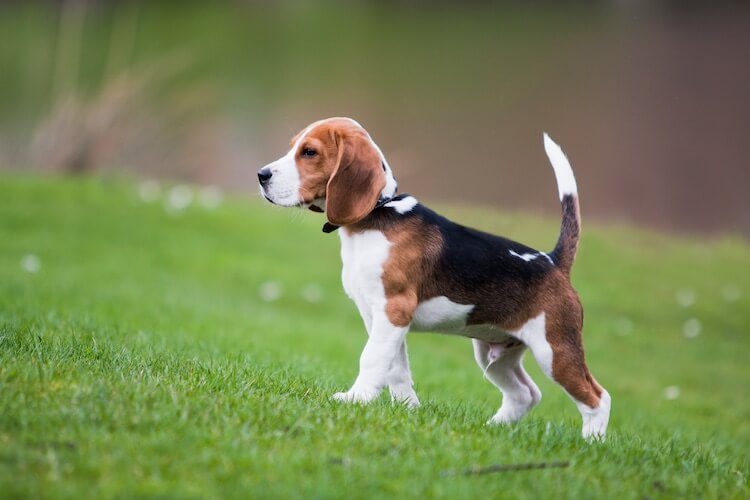
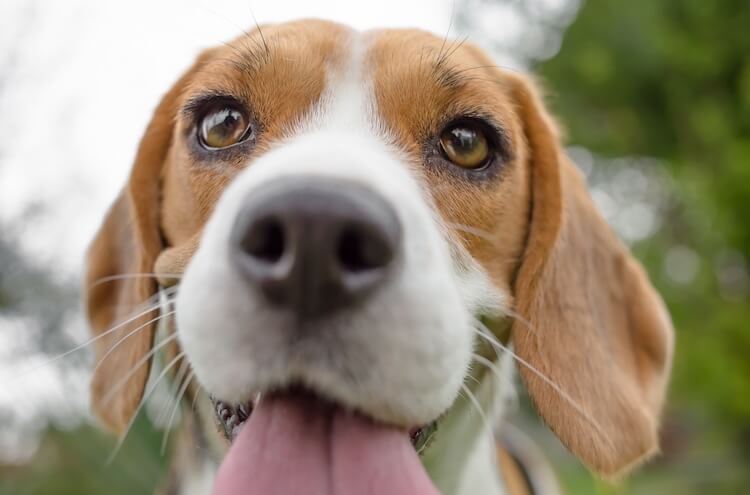

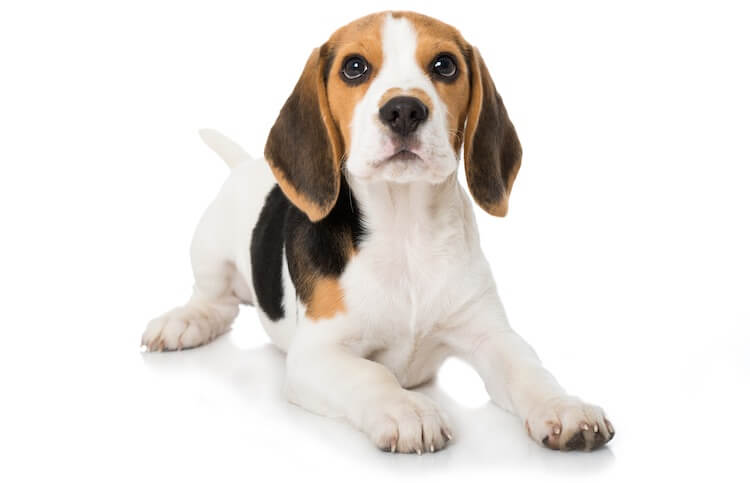
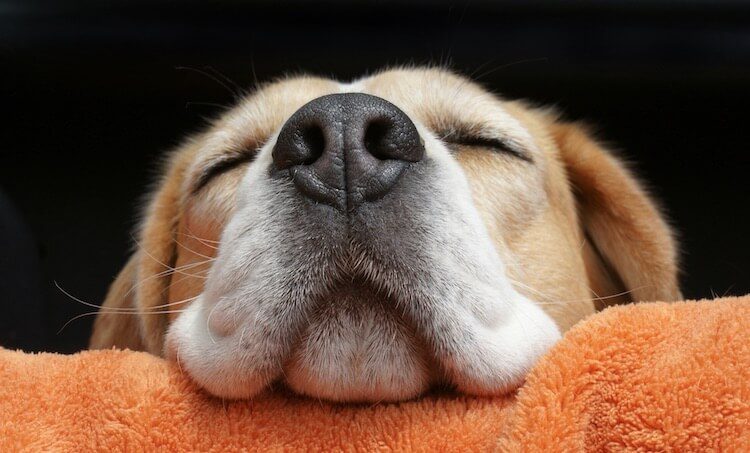
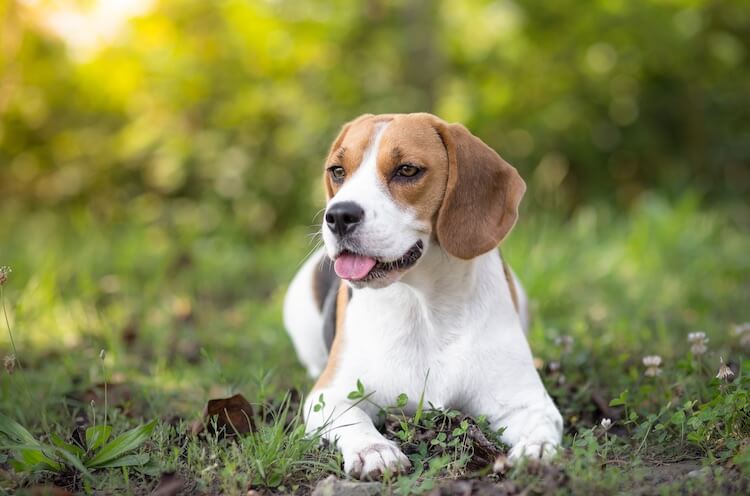

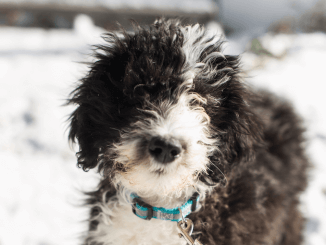
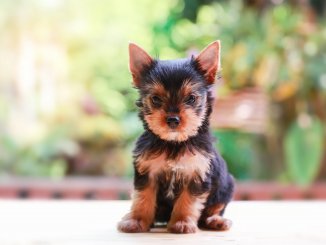
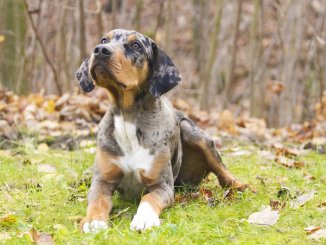
I think these little dogs are perfect. I would love to purchase one but I do not know how. The puppies have won my heart and I would love to hold and play with them. There are so many kinds of dogs today it is difficult to find one.
Best fig I’ve ever owned and lives up to its gentle loving nature. My 5 little grandkids love him. He is playful but cuddles all the time. Diamond G ranch in Saskatchewan raises them
Why are the two developing pocket beagle breeds not mentioned here. While article covers the traits of the Olde English Pocket Beagle, it does not address the Queen Elizabeth Pocket Beagle.
Can you find we a legit breeder lots of scams